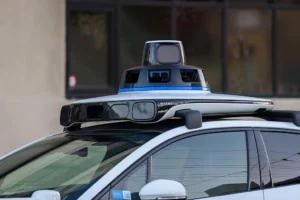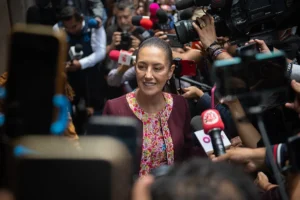New York plans an additional toll to enter the most congested areas of Manhattan
In a landscape where transportation costs already weigh heavily on New Yorkers, a new proposal has sparked controversy: imposing an additional toll of at least $15 to enter the most congested areas of Manhattan. This measure, designed to discourage car usage and promote public transportation, would transform all of Manhattan south of Central Park into a vast toll zone, with license plate readers recording the entry of private vehicles, which would pay $15 or $22.50 if not enrolled in a regional toll program.
Manhattan entrepreneurs fear the negative impact on the local economy, while suburban workers express concern about the prospect of even higher travel costs. Meanwhile, truckers have raised their voices in disagreement, and the New York Trucking Association has filed a federal lawsuit against the Metropolitan Transportation Authority, arguing that the rate hike is unfair and unconstitutional for the trucking sector.

Truckers against toll charges in Manhattan
Trucks would be subject to a toll of $24 or $36 per trip, under the transit authority’s plan. Kendra Hems, president of the trucking association, notes that truckers will face an inevitable cost increase, as their routes and schedules are mostly dictated by companies. She warns that this would likely result in price hikes for various products, considering that road transportation moves almost 90% of goods in New York.
The trucking association has urged the transit authority to review the plan, suggesting possible exemptions for the freight transportation sector or the application of more equitable fees. The debate has reached the courts, where federal judges in Manhattan and New Jersey are hearing lawsuits filed by various groups.
At the moment, judges have not yet issued a verdict on these cases, leaving the future of the toll plan in Manhattan in suspense and generating uncertainty about the direction of mobility in the Big Apple. The resolution of this controversy will have a significant impact on urban mobility, as well as on the daily life and economy of New York.
Furthermore, questions arise as to whether the increase in driving costs will be effective in reducing congestion and improving air quality, or if it could have unintended side effects, such as increased financial stress for residents and workers. Ultimately, the outcome of this controversy will not only determine the future of transportation in Manhattan but also send a message about the city’s overall priorities and values.

The meaning of Hanukkah and how to celebrate it on the road
Hanukkah is a celebration of resilience and hope, and here are some ways you can take this on the road. December is one of the

Waymo under investigation for potential safety risk in school zones
A recent wave of videos has shown that some Waymo vehicles are not complying with safety regulations in school zones. The autonomous vehicle company Waymo,

Don’t Blame the Snow: The Real Causes Behind Winter Truck Accidents
Don’t Blame the Snow: Why Most Winter Truck Accidents Are Preventable

Mexico aligns with U.S. as new tariffs target Asian imports
Mexican lawmakers gave their final approval to the new tariffs on Asian imports, largely aligning themselves with the United States’ efforts to tighten trade barriers

Seven charged in New York CDL fraud case involving DMV employees
A group of DMV employees in New York allegedly manipulated the process of obtaining commercial driver’s licenses by allowing applicants who never showed up to

Transportation Seeks Proposals to Rebuild the American Legion Memorial Bridge
Transportation seeks proposals to rebuild the American Legion Memorial Bridge, repeating the call for proposals to address the most critical freight chokepoint on the East Coast. The initiative aims to attract ideas, financing models, and private-sector innovation to modernize a corridor that today imposes millions in delays on the trucking industry.
